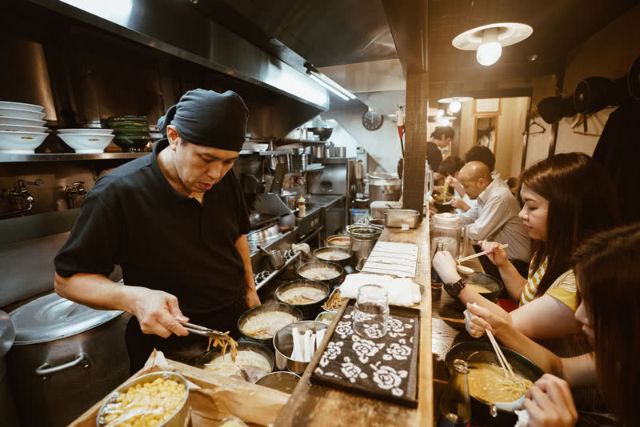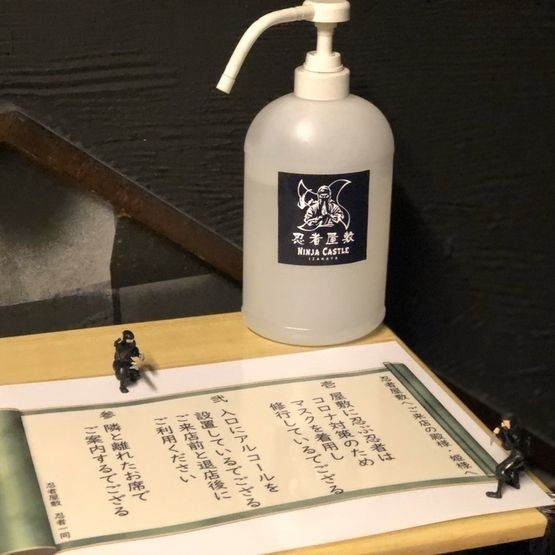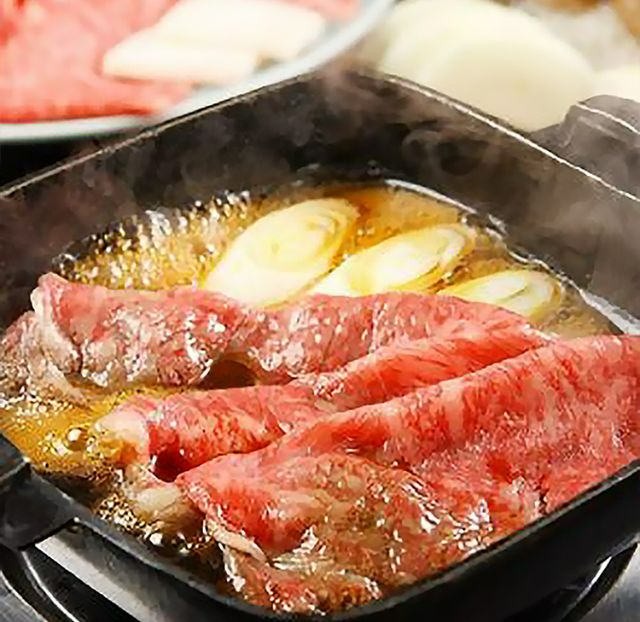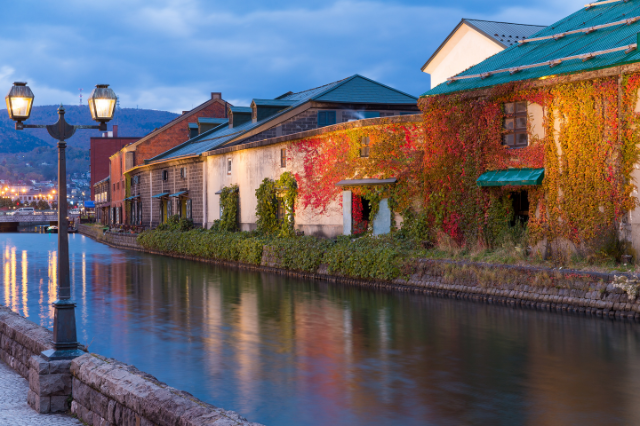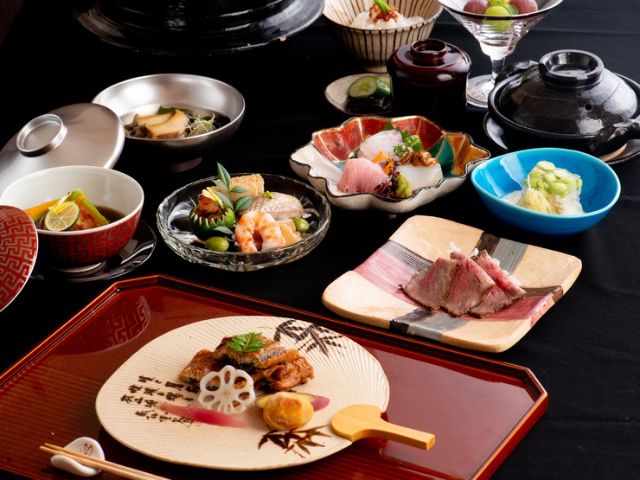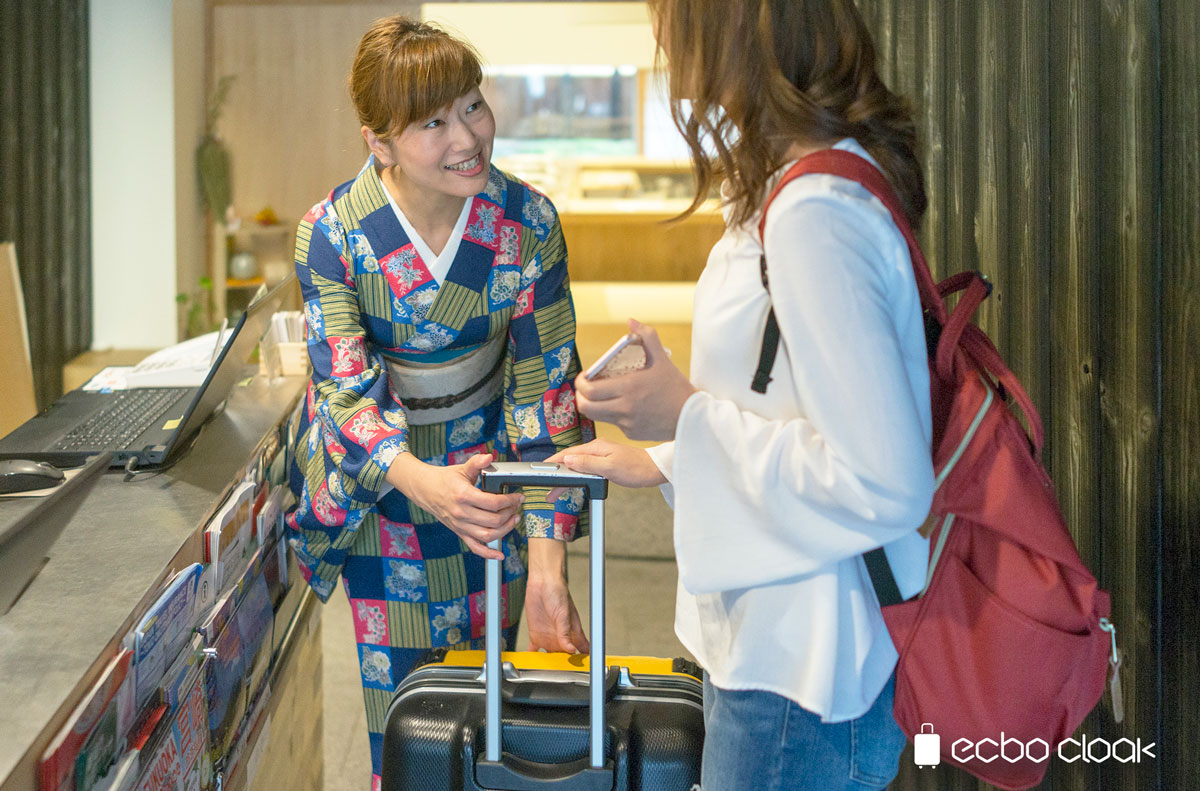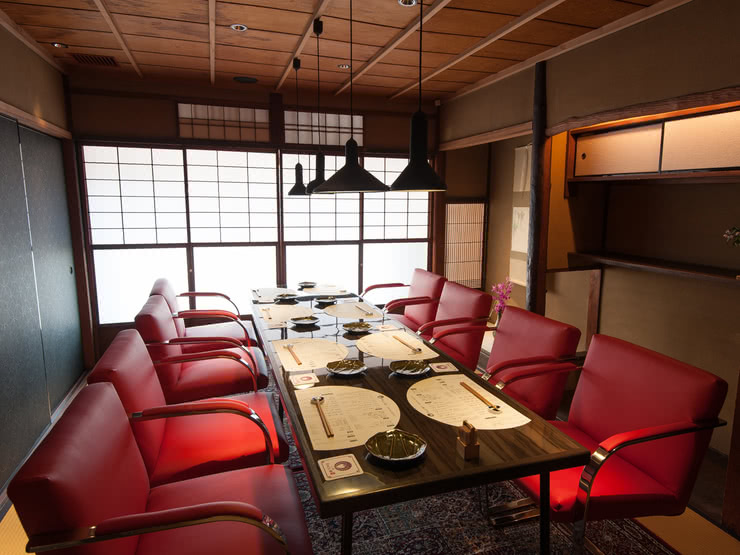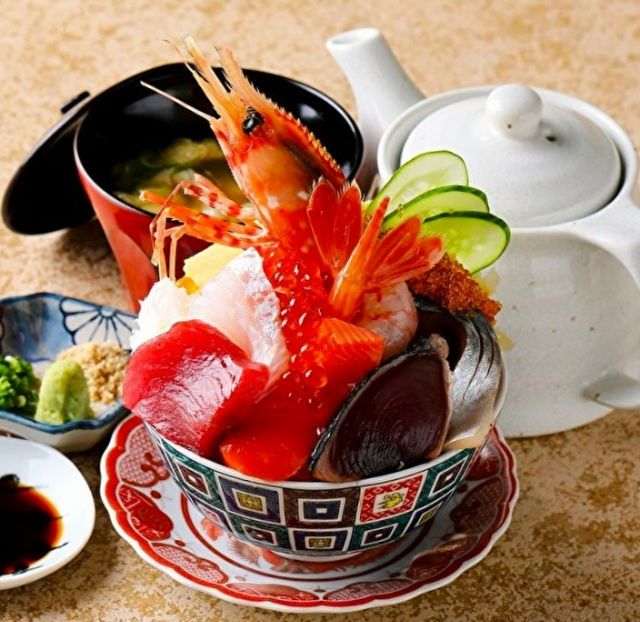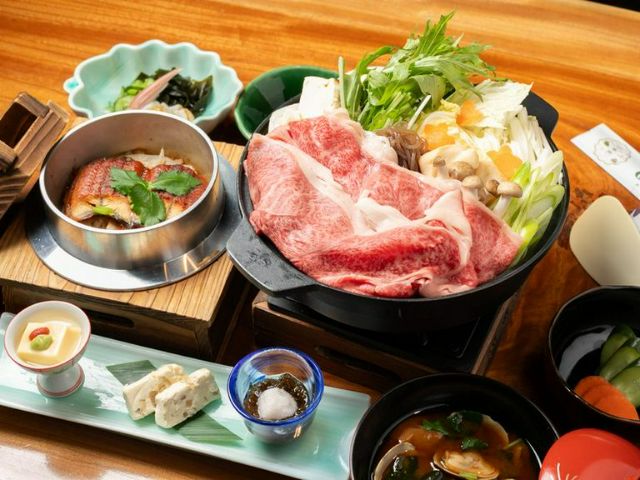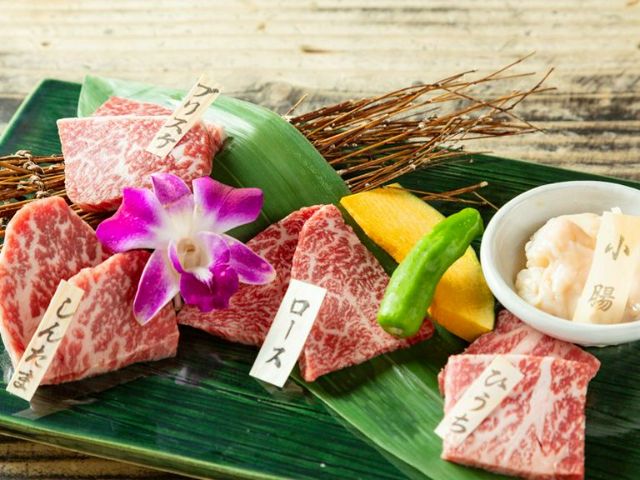The Ultimate Guide to Soba, One of Japan's First Fast Foods
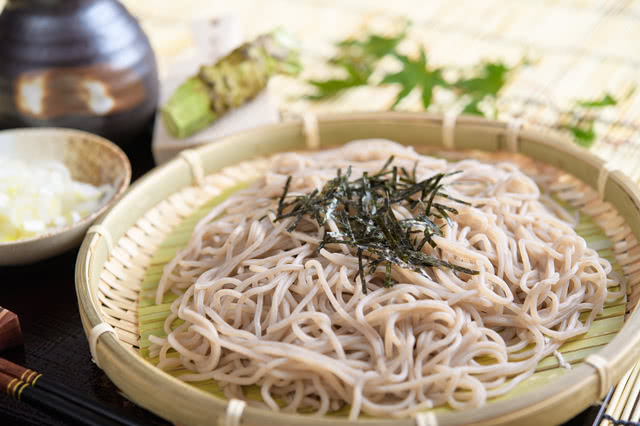
What Is Soba?
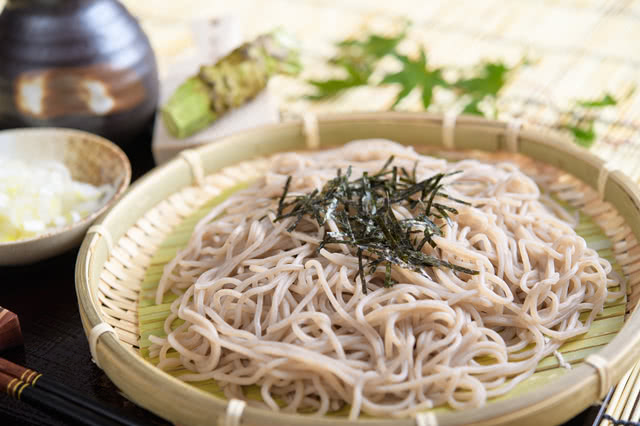
- Nagano Prefecture, the Soba Mecca
You can have soba anywhere in Japan, but Nagano Prefecture is particularly famous as the soba mecca of Japan. Since long ago, it has been flourishing thanks to buckwheat cultivation, and most areas of this prefecture have their own unique version of soba. Nagano's Togakushi soba is among Japan's top 3 soba varieties, together with Shimane Prefecture's Izumo soba and Iwate Prefecture's Wanko soba.
- Soba Tastes Different in Kanto and Kansai?!
Kanto and Kansai use different types of dashi (broth): dashi with deep color and flavor that's based off katsuobushi (dried tuna flakes) is the most common in Kanto, while in Kansai, the flavor is given by kombu (kelp), resulting in more light and clear broth. Try them both to compare them and pick your favorite!
Types of Soba
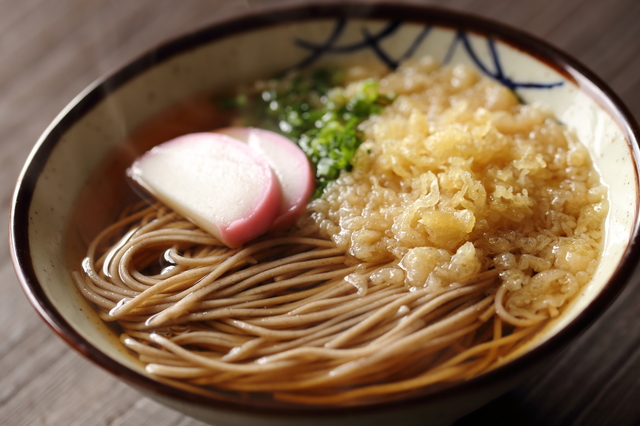
- Kake Soba
This kind of soba is simply served with just hot dashi. Sometimes you may add tenkasu (tempura bits), scallions, or other condiments.
- Zaru Soba
You eat this type of soba cold with tsuyu (dipping sauce), and the noodles are served on a zaru (bamboo basket). Most restaurants top this dish with shredded nori (seaweed). The name changes according to the ingredients and what tableware it's served in, so you will sometimes see this called "Mori soba" or "Seiro soba."
- Tanuki Soba
Usually, this dish consists of kake soba topped with tenkasu. However, you'll find different ingredients being used depending on the region: in Osaka, the word "tanuki" refers to a sweet boiled abura-age (thinly sliced and fried tofu), while in Kyoto, the noodles are topped with shredded abura-age and dressed with ankake (a thick starchy sauce).
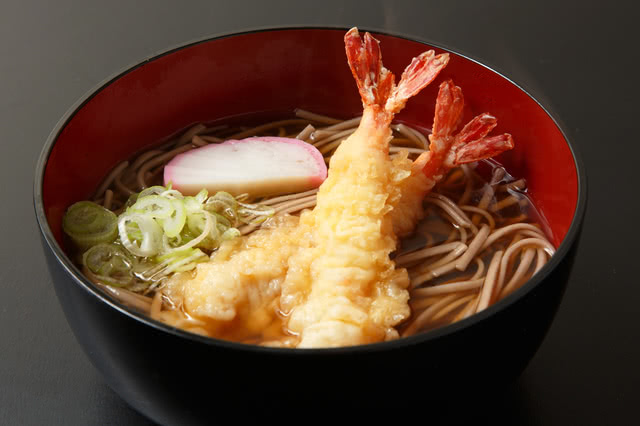
As simple as it sounds, this type of soba refers to kake soba topped with tempura. Usually, it's shrimp tempura.
- Kakiage Soba
Kake soba (simple soba with hot dashi) with kakiage (tempura fritter made by mixing batter with finely-cut seafood and vegetables) on top is called Kakiage Soba.
- Tororo Soba
Tororo is grated yam, and it's used to enrich the tsuyu you dip this variety of cold soba into. A different version consists of kake soba topped with grated yam or soaked in a tororo-based dashi (also called "Yamakake soba"). Sometimes, this soba comes topped with egg yolk or a raw quail egg.
- Okame Soba
On kake soba, you'll get kamaboko (fish paste cake), nori, greens, shiitake mushrooms, and other ingredients arranged in the shape of an okame mask (used in Kagura, a ritual dance dedicated to the Shinto deities).
- Kamo Nanban Soba
Here, kake soba is topped with scallions and duck (kamo) meat boiled in tsuyu. This dish is also called by the abbreviation "Kamonan."
How to Eat Zaru Soba
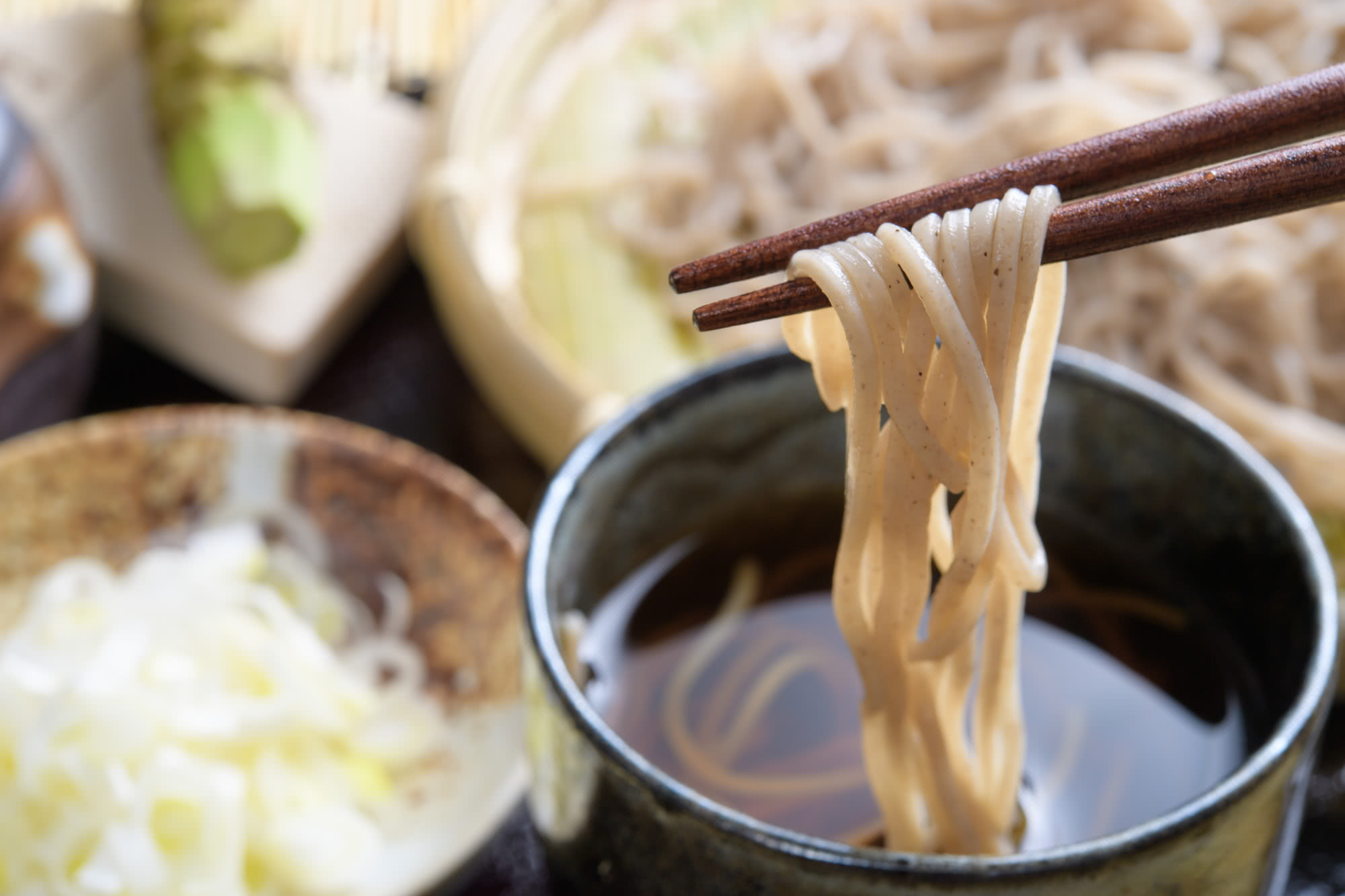
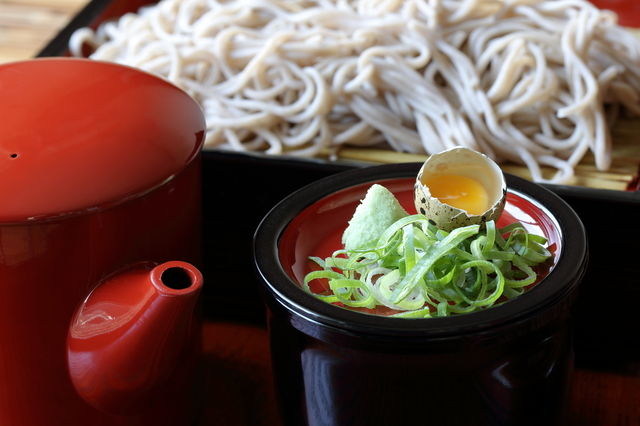
1. Don't add condiments when taking the first bite
Zaru soba usually come with condiments, but in the beginning, simply dipping the noodles in tsuyu will allow you to taste their original flavor.
2. Be careful not to use too much tsuyu!
Pick a bite-sized amount of soba with your chopsticks and dip only the lower half of the noodles in the tsuyu. When dipped in tsuyu, the noodles will stretch out and break apart in no time, so once you put them in your mouth, suck in all the noodles instead of biting them off. If you want, you can hold the cup of tsuyu under your chin while doing so.
3. Try to add condiments
Now that you've experienced the authentic flavor of soba, find out how the noodles taste with condiments like scallions or wasabi. You can add them to the tsuyu, but the ideal way to enjoy the combination of flavors is to top them on the noodles.
4. Drink the soba soup
Depending on the restaurant, when you're finished eating your noodles, you may be served "soba-yu". This is the broth that the noodles were boiled in, and it's full of precious nutrients. You may either drink it as is, or mix it with the remaining tsuyu.
- If it's served with tempura on the side...
When you order zaru soba with tempura, you can dip tempura in the tsuyu as well. Alternatively, some restaurants provide a special tsuyu for tempura or salt as extra seasoning.
Are There Rules on Eating Soba?
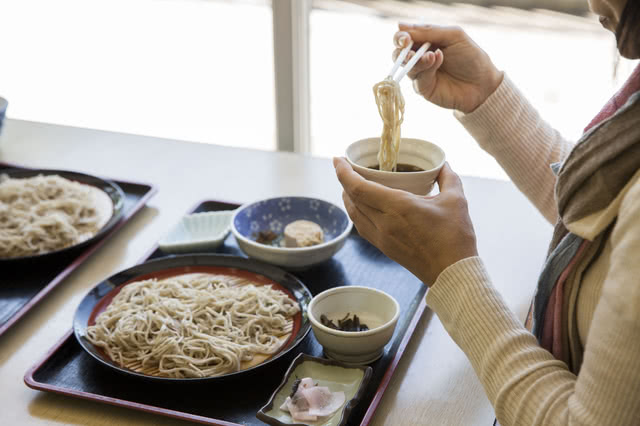
Also, they taste better if you suck them all in instead of cutting them off with your teeth. Don't worry if you make a slurpy sound - it's totally acceptable. Slurping allows the aroma of the soba to move from your throat to your nostrils, making the noodles taste even more delicious.
How to Enjoy Soba Restaurants
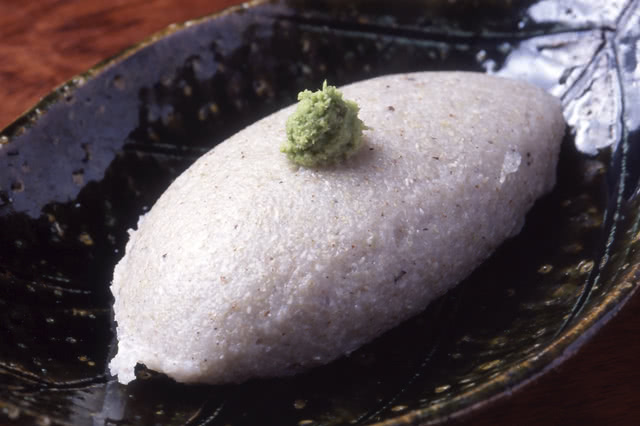
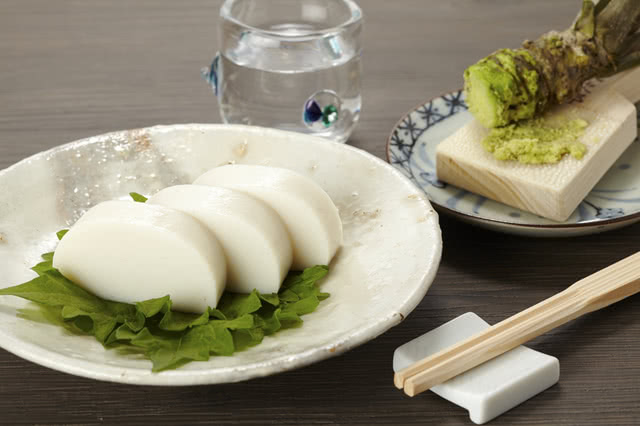
For example, sobagaki is a dough made from buckwheat flour and hot water that you eat by dipping it into soy sauce or tsuyu. It allows you to genuinely enjoy the flavor and aroma of buckwheat. Other classics are ita-wasa, which is thinly-sliced kamaboko dressed with wasabi and soy sauce; tamagoyaki (Japanese omelet) made with the same dashi or tsuyu for the soba; grilled duck, tempura, and so on.
Unmissable Soba Spots You Have to Try at Least Once
1. The 150-Year-Old Soba Restaurant "Edo Soba Teuchidokoro Asada" (Asakusabashi)
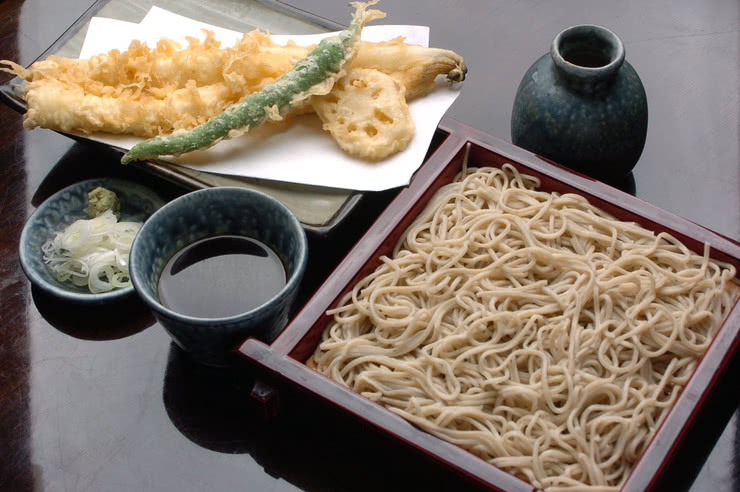
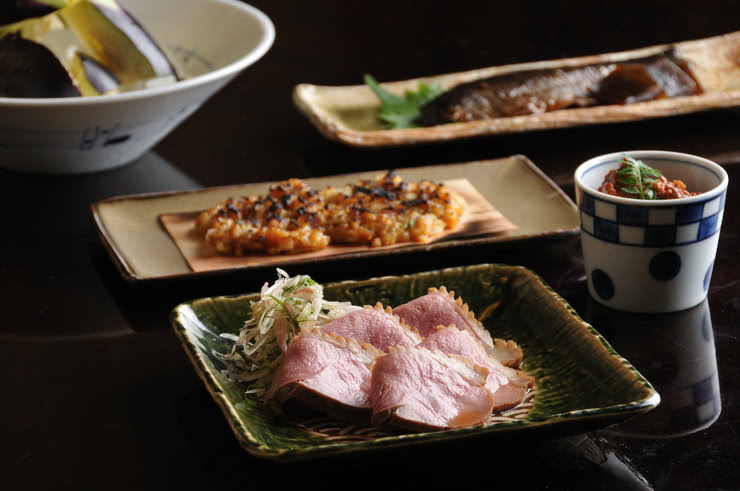
Edo Soba Teuchidokoro Asada
[Saturday] Lunch 11:30 am - 2:30 pm, Dinner 5:30 pm - 9:00 pm (L.O. 8:00 pm)
Closed: Sunday, National Holidays
Average price: [Dinner] 6,000 JPY / [Lunch] 1,300 JPY
Address: 2-29-11, Asakusabashi, Taito-ku, Tokyo Map
More Details
2. Soak in the Downtown Atmosphere of Kanda Matsuya (Awajicho)
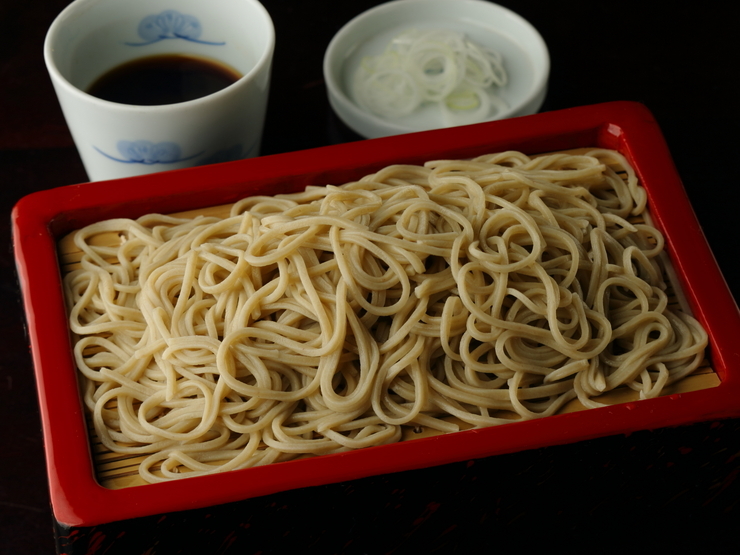
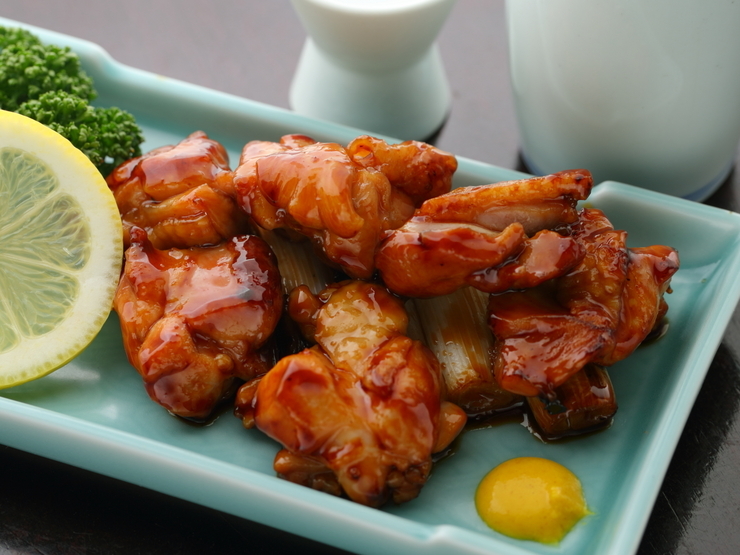
Kanda Matsuya
[Saturday, National Holidays] 11:00 am - 7:00 pm (L.O. 6:45 pm)
Closed: Sunday
Average price: [Dinner] 2,000 JPY / [Lunch] 1,000 JPY
Address: 1-13, Kanda Suda-cho, Chiyoda-ku, Tokyo Map
More Details
3. Suijin-En(Chohu)
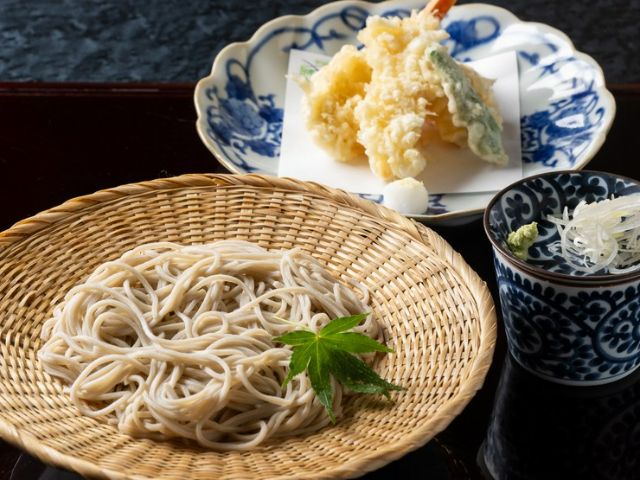
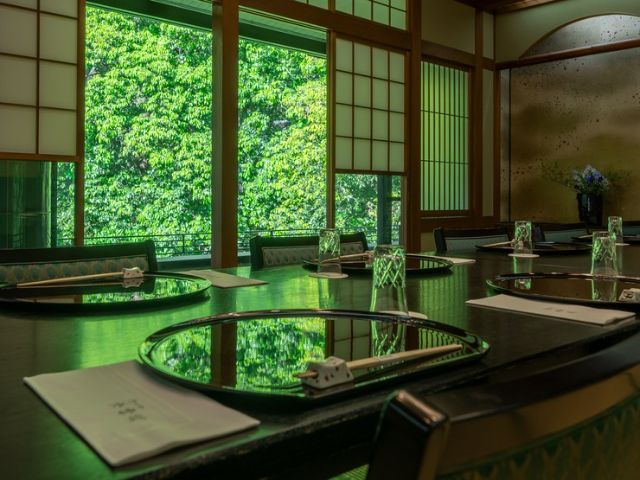
Suijin-En
Closed: Wednesday
Average price: [Dinner] 10,000 JPY / [Lunch] 5,000 JPY
Access: From the north exit of Keio Chofu Station, take the Keio Bus bound for Kichijoji Station or the bus bound for Mitaka Station. It takes 3 minutes to walk from the "Jindaiji Entrance" bus stop.
Address: 5-10-3, Jindaiji Motomachi, Chofu-shi, Tokyo Map
More Details Reservation
Disclaimer: All information is accurate at time of publication.
Thank you for reading our article.
Our goal is to take your culinary journey to the next level by helping you find the best restaurant. With SAVOR JAPAN, you can search and make reservations for
the Soba restaurants found in and around that fill your needs.
Discover more Soba restaurants by area
- Tokyo Area
- Near Tokyo
- Kyoto and Osaka Area
- Hokkaido Area
- Northern Honshu (Tohoku)
- Central Honshu (Chubu)
- Western Honshu (Chugoku)
- Shikoku
- Kyushu
- Okinawa and Southeast Islands
Discover more restaurants to eat Japanese Cuisine by area
Related Articles
New Articles
Categories
Cuisine
- Bars (21)
-
Japanese Cuisine (651)
- Kaiseki (42)
- Nabe (19)
- Okonomiyaki (18)
- Shabu Shabu (32)
- Soba (17)
- Sushi (129)
- Tempura (17)
- Teppanyaki (46)
- Shojin Ryori (2)
- Tonkatsu (10)
- Kushiyaki (10)
- Yakitori (41)
- Sukiyaki (33)
- Japanese Cuisine (336)
- Oyster (2)
- Sashimi/ Seafood (17)
- Unagi (eel) (30)
- Motsu Nabe (offal hotpot) (6)
- Mizutaki (chicken hot pot) (3)
- Oden (4)
- Kaisendon (seafood bowl) (7)
- Udon (2)
- Taverns(Izakaya) Cuisine (117)
- Western Cuisine (39)
- Italian/French Cuisine (91)
- Yakiniku/Steak (217)
- Chinese Cuisine (21)
- Ramen (Noodles) Cuisine (21)
- Cafe/Sweets (54)
- Other Asian Cuisine (5)
- Global/International Cuisine (7)
- Alcohol (43)
- Other (10)
Area
- Shikoku (10)
- Kyoto and Osaka (343)
-
Tokyo (435)
- Tokyo (266)
- Ginza (39)
- Roppongi (21)
- Shibuya (22)
- Shinjuku (41)
- Asakusa (19)
- Ebisu (10)
- Tsukiji (10)
- Tokyo Landmarks (3)
- Ueno (21)
- Akihabara (9)
- Ikebukuro (11)
- Jiyugaoka, Denenchofu, Nakameguro (9)
- Shimokitazawa (4)
- Kichijoji (3)
- Tachikawa (1)
- Omotesando, Harajuku, Aoyama (17)
- Akabane (1)
- Kagurazaka (4)
- Akasaka (8)
- Odaiba (1)
- Tsukishima, Harumi, Toyosu (3)
- Near Tokyo (97)
- Okinawa and Southeast Islands (58)
- Hokkaido (120)
- Northern Honshu (Tohoku) (31)
- Central Honshu (Chubu) (141)
- Western Honshu (Chugoku) (32)
- Kyushu (92)
Archives
- July 2025(5)
- June 2025(18)
- May 2025(34)
- April 2025(43)
- March 2025(30)
- February 2025(36)
- January 2025(26)
- December 2024(69)
- November 2024(31)
- October 2024(15)
- September 2024(39)
- August 2024(65)
- July 2024(31)
- June 2024(54)
- May 2024(61)
- April 2024(28)
- March 2024(31)
- February 2024(42)
- January 2024(32)
- December 2023(20)
- November 2023(5)
- October 2023(11)
- September 2023(7)
- August 2023(18)
- July 2023(8)
- June 2023(8)
- May 2023(18)
- April 2023(15)
- March 2023(1)
- January 2023(1)
- April 2022(2)
- March 2022(2)
- February 2022(1)
- January 2022(1)
- July 2021(1)
- March 2021(1)
- February 2021(1)
- December 2020(1)
- October 2020(1)
- September 2020(2)
- August 2020(10)
- July 2020(6)
- June 2020(9)
- May 2020(11)
- April 2020(8)
- March 2020(8)
- February 2020(13)
- January 2020(9)
- December 2019(24)
- November 2019(8)
- August 2019(14)
- July 2019(15)
- June 2019(18)
- May 2019(17)
- April 2019(16)
- March 2019(22)
- February 2019(22)
- January 2019(26)
- December 2018(34)
- November 2018(40)
- October 2018(32)
- September 2018(11)
- August 2018(8)
- July 2018(6)
- June 2018(9)
- May 2018(10)
- April 2018(21)
- March 2018(74)
- February 2018(39)
- January 2018(26)
- December 2017(60)
Keywords
- Omakase
- Accessible
- Affordable
- All-You-Can-Eat
- Amazing Scenery
- anime
- Art
- Autumn
- Awards
- Beer Gardens
- Breakfast
- Chef Recommendations
- Cherry Blossoms
- Chinese
- Close To Station
- Condiments
- Counter
- Coupon
- Crab
- Culture
- Dassai
- Dates
- delivery
- Early Summer
- Editor's Recommendation
- English Available
- Event
- Expo
- Fall Leaves
- Family-Friendly
- Famous Restaurant
- Famous Tourist Spot
- Fast Food
- festival
- fireworks
- Flower Farm
- Free Wi-Fi
- French
- Great Location
- Guide
- Hibachi
- hotpot
- How To
- hydrangea
- Hygiene
- Illumination
- Italian
- Izakaya
- Japanese
- Japanese alcohol
- jingisukan
- Kaiseki
- Kappo
- Kushiage
- Kushikatsu
- Kyoto
- Late-Night
- Lunch
- Manners
- matsusakagyu
- Michelin
- mizutaki
- Model Course
- monjayaki
- motsunabe
- Mt.Fuji
- Multilingual Menus
- Nabe
- Narita Airport
- New Year
- Ninja
- Noodle
- Oden
- Okonomiyaki
- omotenashi
- Onsen
- Osaka
- Osaka Station
- Photogenic Site
- pizza
- PR
- Private Room
- Ramen
- ranking
- Recipe
- Regional Cuisine
- Resort
- Rice Bowl Dish (Donburi)
- sacred places
- Sake
- Sakura
- Sashimi
- sea urchin
- Setouchi Area
- Shabu Shabu
- sightseeing
- Signature Dish
- Soba
- Solo Diners Welcomed
- Spicy Food
- Spring
- Steak
- Summer
- Sunflower
- Sushi
- Takashimaya
- takeout
- Teppanyaki
- Terrace Seating
- Tokyo
- Tokyo Skytree
- Tokyo Tower
- unagi
- UNESCO
- Vegan
- Vegetarian
- Wagyu
- What Popular Gourmet Sites Recommend
- Whisky
- Wine Bar
- Winter
- Wisteria
- Workshop
- World Heritage Site
- Yakiniku
- Yoshoku
- Yuba
- Zen
Discover Restaurants By Area
-

Tokyo Area
Japan's largest city, Tokyo, is the center of culinary culture in Japan. Countless Tokyo restaurants serve every kind of food imaginable and the Toyosu fish market keeps restaurants stocked with the nation's finest fish.
-

Near Tokyo
Coastal areas, mountains and valleys surrounding Tokyo are bursting with tourist destinations, such as hot springs and ski slopes, where many unique foods are only available locally.
-

Kyoto and Osaka Area
The cities of Kyoto and Osaka, together with their surrounding areas, have greatly influenced Japan's culinary culture since the 7th Century. The region is renowned for its entertainment, Kobe beef, and wide-ranging traditional dishes.
-

Hokkaido Area
The island of Hokkaido is home to wide-ranging produce of the finest quality, such as rice, meat, vegetables, fish and fruit. Popular dishes from Hokkaido include robatayaki (food slowly roasted on skewers) and Sapporo miso ramen.
-

Northern Honshu (Tohoku)
The northern end of Japan's main island, Honshu, is renowned for its seasonal fruit and vegetables, nation-leading harvest of fish (especially tuna from Ohma), and delicious beef from Yonezawa, Sendai and Yamagata.
-

Central Honshu (Chubu)
Chubu is in the center of Japan's main island, Honshu, and its culinary culture reflects its position between Japan's western and eastern halves. Delicious Hida beef, world-famous Mount Fuji and many acclaimed sake breweries are in Chubu.
-

Western Honshu (Chugoku)
Chugoku, on the southwest of Japan's main island, is rich with diverse produce. Many of its products are praised as Japan's best, including Matsuba crabs from Tottori and oysters from Hiroshima. Its pears and muscats are also top grade.
-

Shikoku
The mild climate of Shikoku is ideal for growing citrus fruit such as sudachi. Shikoku is also famous for Sanuki udon noodles, huge yields of tiger prawn from Ehime Prefecture and the best torafugu (tiger globefish) in the country.
-

Kyushu
Western culture was first introduced to Japan through Kyushu, Japan's third largest island, where the influence of Portuguese and other western cuisine influenced the creation of a colorful culinary tradition.
-

Okinawa and Southeast Islands
Okinawa, Japan’s southernmost prefecture, is a treasure trove of distinctive dishes and drinks that have become popular throughout Japan, including Okinawa soba, unique sushi toppings and Awamori distilled liquor.
